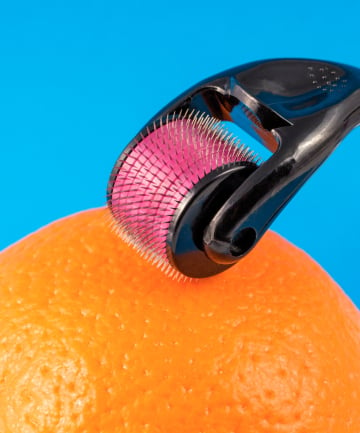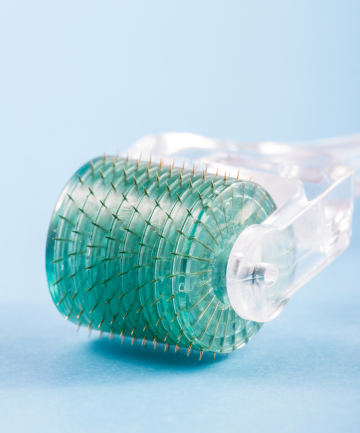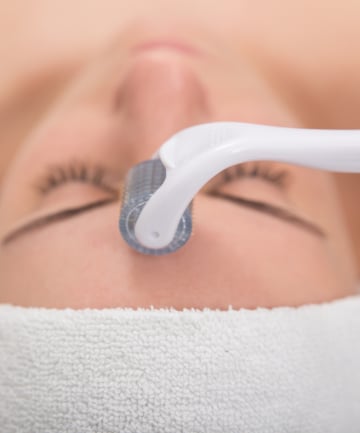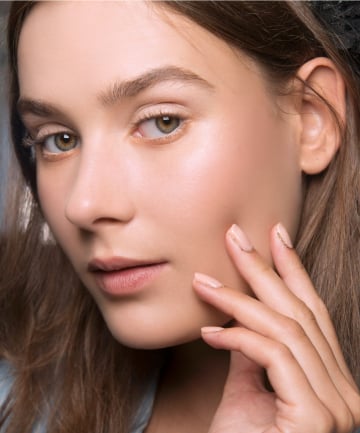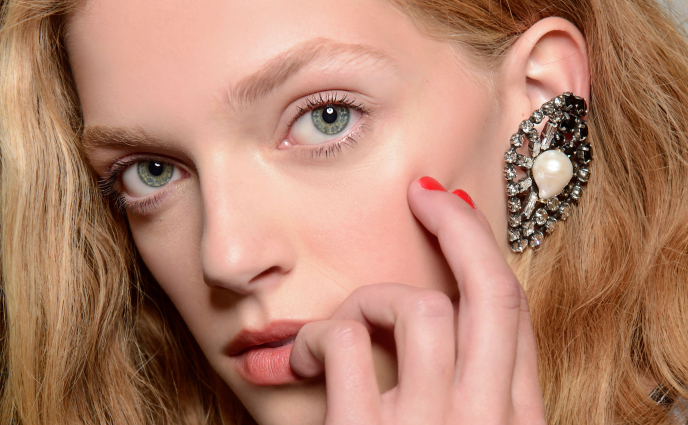It sounds terrifying because the word "needle" is in the name, but microneedling can be an effective method of skin cell rejuvenation, according to many studies.
Here's how it works: The tiny "microneedles" cause equally tiny injuries to your skin. Your skin, of course, then repairs itself; boosting collagen production on the way. It also works to boost the efficacy of the other skin care products in your routine.
It's quite popular — many celebrities love the trend: Jennifer Aniston, Demi Moore, Gwyneth Paltrow, and Kim Kardashian are just a handful of mega-stars that swear by microneedling.
Here's the real question, though: Is it safe to DIY? We spoke to Dr. Loretta Ciraldo, MD FAAD, a Miami-based board certified dermatologist with over 40 years' experience (and the founder of Dr Loretta Skin Care) to get her opinion on the matter.
Image via Imaxtree
Here's how it works: The tiny "microneedles" cause equally tiny injuries to your skin. Your skin, of course, then repairs itself; boosting collagen production on the way. It also works to boost the efficacy of the other skin care products in your routine.
It's quite popular — many celebrities love the trend: Jennifer Aniston, Demi Moore, Gwyneth Paltrow, and Kim Kardashian are just a handful of mega-stars that swear by microneedling.
Here's the real question, though: Is it safe to DIY? We spoke to Dr. Loretta Ciraldo, MD FAAD, a Miami-based board certified dermatologist with over 40 years' experience (and the founder of Dr Loretta Skin Care) to get her opinion on the matter.
Image via Imaxtree
There are two benefits according to Ciraldo: "One: creation of channels (microscopic tube-like openings) at the skin surface to enhance the penetration of skin care products; and two: micro wounding caused by this procedure stimulates healing to increase collagen production and benefit depressed acne scars and lines and wrinkles."
Image via marcinm111/Getty
Image via marcinm111/Getty
Ciraldo says there are two options if you're looking online: a hand roller or an electrical or battery run stamping device.
"In most cases, it's wise to start with a simple handheld roller device with needles on the roller," she says. She suggests 0.25 millimeters as a good starting point. "For more aggressive treatment, there are battery operated or electric devices that work like a stamper so that the needles penetrate several times in the same area. This kind of device will be more effective for deeper lines and wrinkles as well as indented acne scars," says the dermatologist.
Image via marcinm111/Getty
"In most cases, it's wise to start with a simple handheld roller device with needles on the roller," she says. She suggests 0.25 millimeters as a good starting point. "For more aggressive treatment, there are battery operated or electric devices that work like a stamper so that the needles penetrate several times in the same area. This kind of device will be more effective for deeper lines and wrinkles as well as indented acne scars," says the dermatologist.
Image via marcinm111/Getty
"Longer needle lengths will produce more collagen than shorter needles," says Ciraldo. "The shorter needles work well for enhanced penetration and a short-lived increase in skin vibrancy and firmer appearance."
But she also warns that there is a chance of scarring with a longer needle length used for too long or too frequently in one area.
Image via Neeila/Getty
But she also warns that there is a chance of scarring with a longer needle length used for too long or too frequently in one area.
Image via Neeila/Getty
Ciraldo says that most people microneedle once a week. "Frequency of this treatment will depend on your skin's reaction as well as your rationale for using the microneedling," she says.
Do not microneedle skin that is already red, sensitive, or swollen, though: "It is also important to realize that you do not want to see any bruising from this procedure. If you have tiny bleeding points or bruising the device is either too strong for you or you have used it too aggressively."
Image via Imaxtree
Do not microneedle skin that is already red, sensitive, or swollen, though: "It is also important to realize that you do not want to see any bruising from this procedure. If you have tiny bleeding points or bruising the device is either too strong for you or you have used it too aggressively."
Image via Imaxtree



